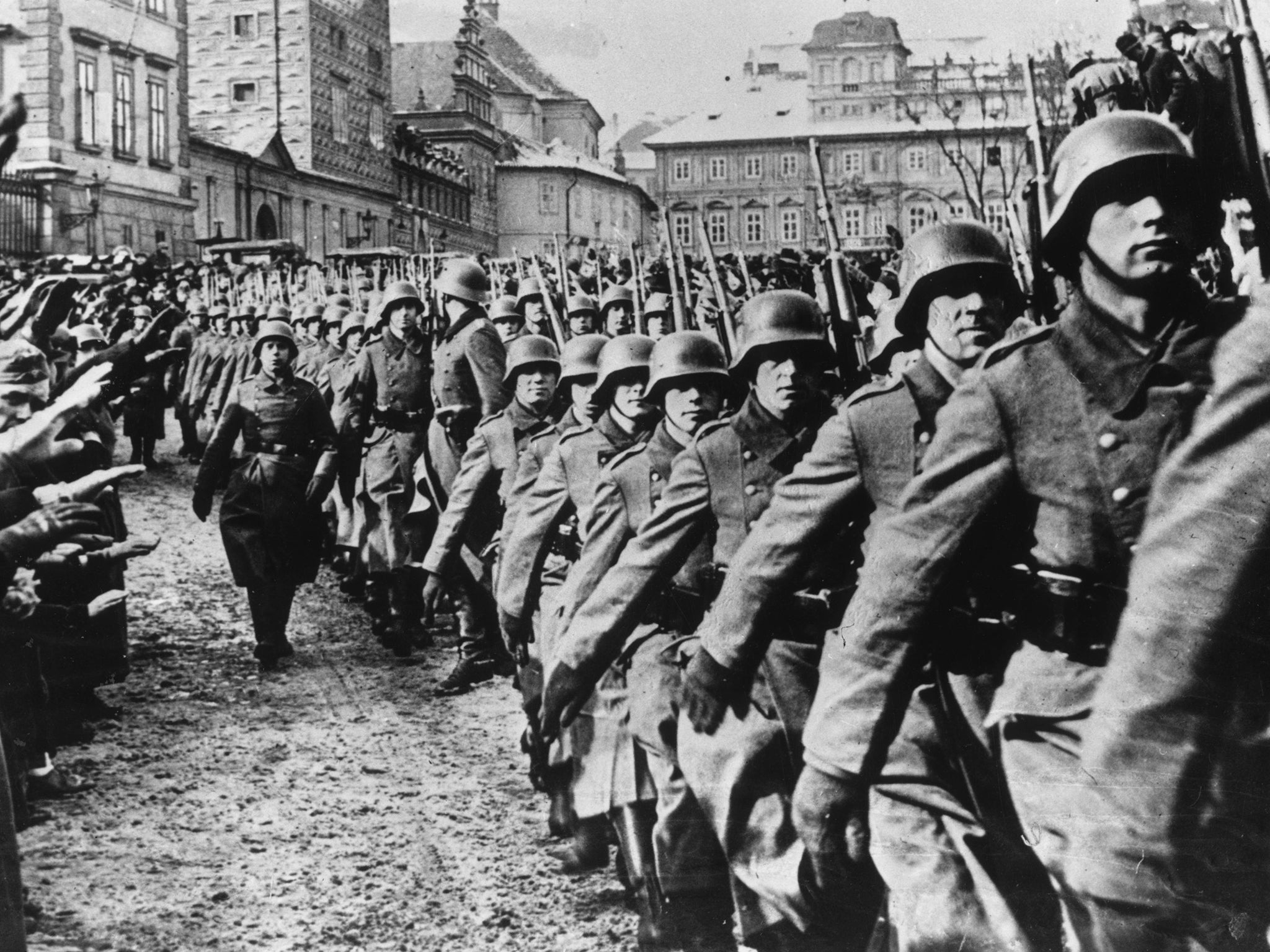Operation Sea Lion: Hitler's plan to invade Britain marked with publication of Nazi war charts
It seems that one German officer found the proposed assault a bit comical

Your support helps us to tell the story
From reproductive rights to climate change to Big Tech, The Independent is on the ground when the story is developing. Whether it's investigating the financials of Elon Musk's pro-Trump PAC or producing our latest documentary, 'The A Word', which shines a light on the American women fighting for reproductive rights, we know how important it is to parse out the facts from the messaging.
At such a critical moment in US history, we need reporters on the ground. Your donation allows us to keep sending journalists to speak to both sides of the story.
The Independent is trusted by Americans across the entire political spectrum. And unlike many other quality news outlets, we choose not to lock Americans out of our reporting and analysis with paywalls. We believe quality journalism should be available to everyone, paid for by those who can afford it.
Your support makes all the difference.It was the most fearful moment in the history of modern Britain – when Adolf Hitler’s shock troops lined up along the coast of France and prepared to launch an invasion.
But a never before published Nazi map shows how at least one German officer may have found the assault, codenamed Operation Sea Lion, well, a little bit comical.
The mystery officer appears to have got the doodle bug, taking time out from drawing attack lines to sketch three invasion ships steaming across the English Channel. He also drew what appears to be a rather rotund paratrooper descending on the Kent countryside.

Historians at the Imperial War Museums, who found the map in their archives, say it gives a rare insight into the minds of German officers preparing to storm Britain.
The map can be revealed today, in the week of the 75th anniversary of Hitler’s decision to cancel the invasion after he realised he had lost the Battle of Britain.
“The drawings on the map almost look quite childish in some ways,” said Ian Kikuchi, a historian at the Imperial War Museum in London.
“But they are quite chilling when you think about what the invasion would have really entailed, with German tanks landing on the beaches and then rolling northwards through Kent.”
Hitler began drawing up plans to invade Britain in July 1940, buoyed by his swift occupation of France, Belgium and Holland.
He issued the invasion plans under Führer Directive No 16 and announced: “The aim of this operation is to eliminate the English Motherland as a base from which the war against Germany can be continued, and, if necessary, to occupy the country completely.”
Hitler hoped to destroy the Royal Air Force in the Battle of Britain before sending troops across the Channel.
As RAF Spitfires and Hurricanes battled against the Luftwaffe in summer skies over England, German cameramen confidently filmed Nazi infantry practising the invasion on a beach near Antwerp, in Belgium.
But the scheme was opposed by some leading Nazis, including the Luftwaffe’s commander Hermann Göring, who was pessimistic about its success, and that cynicism may have rubbed off on the officer who drew the doodle map.
It was discovered by British troops following D-Day and is believed to have been handed over to the Imperial War Museum in London by the Government shortly after 1945.
The officer who drew the map is thought to have been a member of the headquarters staff of the German 16th Army, which was due to play a major part in the offensive.
It is unclear what his boss, Fieldmarshal Ernst Busch, thought of his work.
The highly-decorated commander, who later led his men in Hitler’s failed invasion of Russia, was one of the few who did ultimately make it across the English Channel. He died of heart-failure at a prisoner of war camp in Aldershot in 1945.
The map is now on display at the Imperial War Museum in London. A copy can also be seen at the Imperial War Museum North in Trafford, Greater Manchester, where “Blitzed Brits”, an exhibition in association with the Horrible Histories children’s television programme, is currently taking place.
It is set to be published for the first time in a forthcoming book called Mapping the Second World War, by Peter Chasseaud, which will be published next month in association with the IWM.
Mr Kikuchi said: “The scale of the map and the narrowness of the Channel shows just how close the Nazis came to invading Britain.
“Whoever drew those ships did it deliberately, rather than as an afterthought. He left a space for one of them in one of the lines he has drawn on the map.
“The ships look like German destroyers. The German Navy had lost a lot of destroyers by 1940 and the reality is that, if the invaders had made the crossing, they would have been annihilated by the Royal Navy. They were planning to make the journey in river barges.
“This map is special because it’s a map of an idea or an aspiration, rather than a map of an actual battle.
“It’s a moment in history that has been frozen in time. When you look at the map, the ships of the invasion fleet are for forever steaming across the Channel and are never quite getting there.”
Join our commenting forum
Join thought-provoking conversations, follow other Independent readers and see their replies
Comments